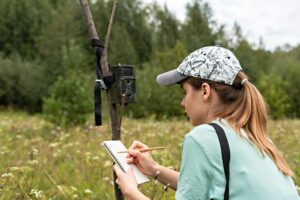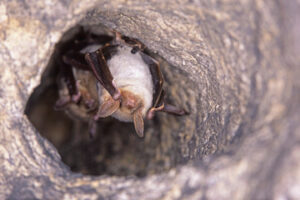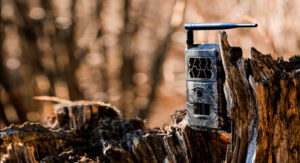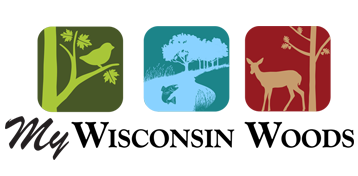
Are YOU a Scientist?
By Denise Thornton
Many Wisconsin landowners—the concerned and the curious—are joining the growing ranks of citizen scientists (CS) who collect information about their property to share with ecologists. This stream of information creates a vivid picture of our natural world and how to manage it.

April is Citizen Science Month, and a great time to explore the varied opportunities to learn more about your own land. “Citizen Science is extremely important for us,” says Owen Boyle, Species Management Section Leader, Bureau of Natural Heritage Conservation, Wisconsin Department of Natural Resources (DNR). “I see how important the data collected by CS volunteers is every day. We are charged with managing Wisconsin’s natural resources, and it helps to know what and where they are.”
The Wisconsin DNR has been a leader in CS projects nationally, and many CS projects seem ideally suited to landowners. “The most successful CS project in the world is run out of the Cornell Lab. Wisconsin has its own page there,” says Boyle.

For those interested in bumble bees, this is the third season of the Wisconsin Bumble Bee Brigade. “That’s a fun one,” says Boyle. “The queens are emerging already. You can monitor anywhere. We had very little information about the bumble bees before this project. We’ve had submissions from over 300 volunteers so far. It’s been phenomenal. For the federally-endangered Rusty Patched Bumble Bee, we’ve added sightings in counties that didn’t have records of this species before.”
If you have bats roosting on your property, there is a DNR program for you. Heather Kaarakka, Conservation Biologist with the DNR, coordinates the summer roost monitoring project. Many of us have heard about White Nose Syndrome (WNS), a fungus which has been catastrophic to bat populations worldwide. The fungus was first spotted in the U.S. out East in 2006-2007. DNR naturalist Dave Redell immediately started a program to monitor bat numbers in Wisconsin before the fungus reached our state, making Wisconsin’s CS bat-monitoring program one of the oldest in the country. White Nose Syndrome showed up in Wisconsin in 2014 when little brown bat numbers dropped by 70-80%. Continued monitoring by volunteers is showing that bat populations in the state, though not as robust as they were, are stabilizing.
Bats are a good topic to monitor. “All eight of our species in Wisconsin eat insects, and they can consume as many as 1,000 insects in an hour. They fly out every night and forage till dawn. They are eating a huge amount of insect pests, including those that damage our agriculture and forests,” says Kaarakka.
Roost monitors participate in two counts each summer. “People go out on a weekend in early June and again in mid-to-late July,” says Kaarakka. “You sit outside your roost in the evening just after sunset and count the bats as they emerge. We do it twice because the baby bats (called pups) are born in early June, and by mid-July they are able to fly. This allows us to see their reproductive success.”

John Davies has land on the Wisconsin River near Portage. He added six bat houses to his property, hoping to reduce the mosquito population around his cabin. “When I realized the DNR was doing bat counting, I followed their easy cues and started reporting,” he says. “The official counts are done in the evening, but if you go out at first light and see them coming back to the roost – that is so cool. At night they drop out and take off, but in the morning there will be 20 to 30 flying around and you are right in amongst them. It’s the neatest thing.”
Another way to monitor wildlife on your land while adding to the larger understanding of the world around us is Snapshot Wisconsin, which coordinates a state-wide network of trail cameras.
“Ecologists have been increasingly using trail cameras to monitor animal populations,” says Christine Anhalt-Depies, Snapshot Wisconsin coordinator, “and Wisconsin has the largest state fish and wildlife agency trail camera network. We are able to collect data year-round.”
“We provide all the equipment and training you need. We ask that folks participate for at least one year, and you only need to check the camera every three months—that’s about how long the batteries and data card last.”
“We have the state divided into 6,000 survey blocks, and there are about 2,000 occupied right now, so there are plenty of opportunities to participate,” says Anhalt-Depies. “If you click on the statewide project application on our website, it shows where we still need volunteers.”

Mike Tuss has 24 acres of woods, marsh, and ponds in Waupaca and more acres up north. He had used trail cams before to inform his hunting. “Snapshot Wisconsin disciplines me to leave a camera out to see what’s goes on all year round,” he says. “The camera takes a series of three shots in a row, so you can actually see the movement of the animal.” He has snapped photos of deer, geese, ducks, sandhill cranes, otters, raccoons, opossum, fox, and coyotes in town, and up north he has shots of deer, bear, bobcats, otter, mink, blue heron, and recently, beaver.
“There are so many ways to plug in,” says Boyle, the DNR species management expert. “Water Action Volunteers is a good one if you have a stream running through your property, and Wisconsin Mussel Monitoring is a lot of fun. Our DNR has many CS options that you can explore online at Wisconsin Citizen-based Monitoring Network . Tap the ‘Get Involved’ tab to search by topic and region for the program that suits your land and interests.”
